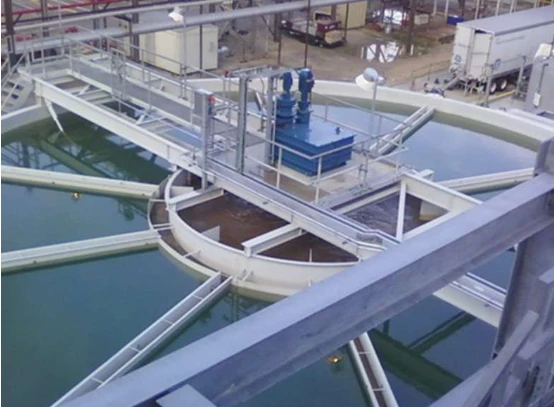
-
 Afrikaans
Afrikaans -
 Albanian
Albanian -
 Amharic
Amharic -
 Arabic
Arabic -
 Armenian
Armenian -
 Azerbaijani
Azerbaijani -
 Basque
Basque -
 Belarusian
Belarusian -
 Bengali
Bengali -
 Bosnian
Bosnian -
 Bulgarian
Bulgarian -
 Catalan
Catalan -
 Cebuano
Cebuano -
 China
China -
 China (Taiwan)
China (Taiwan) -
 Corsican
Corsican -
 Croatian
Croatian -
 Czech
Czech -
 Danish
Danish -
 Dutch
Dutch -
 English
English -
 Esperanto
Esperanto -
 Estonian
Estonian -
 Finnish
Finnish -
 French
French -
 Frisian
Frisian -
 Galician
Galician -
 Georgian
Georgian -
 German
German -
 Greek
Greek -
 Gujarati
Gujarati -
 Haitian Creole
Haitian Creole -
 hausa
hausa -
 hawaiian
hawaiian -
 Hebrew
Hebrew -
 Hindi
Hindi -
 Miao
Miao -
 Hungarian
Hungarian -
 Icelandic
Icelandic -
 igbo
igbo -
 Indonesian
Indonesian -
 irish
irish -
 Italian
Italian -
 Japanese
Japanese -
 Javanese
Javanese -
 Kannada
Kannada -
 kazakh
kazakh -
 Khmer
Khmer -
 Rwandese
Rwandese -
 Korean
Korean -
 Kurdish
Kurdish -
 Kyrgyz
Kyrgyz -
 Lao
Lao -
 Latin
Latin -
 Latvian
Latvian -
 Lithuanian
Lithuanian -
 Luxembourgish
Luxembourgish -
 Macedonian
Macedonian -
 Malgashi
Malgashi -
 Malay
Malay -
 Malayalam
Malayalam -
 Maltese
Maltese -
 Maori
Maori -
 Marathi
Marathi -
 Mongolian
Mongolian -
 Myanmar
Myanmar -
 Nepali
Nepali -
 Norwegian
Norwegian -
 Norwegian
Norwegian -
 Occitan
Occitan -
 Pashto
Pashto -
 Persian
Persian -
 Polish
Polish -
 Portuguese
Portuguese -
 Punjabi
Punjabi -
 Romanian
Romanian -
 Russian
Russian -
 Samoan
Samoan -
 Scottish Gaelic
Scottish Gaelic -
 Serbian
Serbian -
 Sesotho
Sesotho -
 Shona
Shona -
 Sindhi
Sindhi -
 Sinhala
Sinhala -
 Slovak
Slovak -
 Slovenian
Slovenian -
 Somali
Somali -
 Spanish
Spanish -
 Sundanese
Sundanese -
 Swahili
Swahili -
 Swedish
Swedish -
 Tagalog
Tagalog -
 Tajik
Tajik -
 Tamil
Tamil -
 Tatar
Tatar -
 Telugu
Telugu -
 Thai
Thai -
 Turkish
Turkish -
 Turkmen
Turkmen -
 Ukrainian
Ukrainian -
 Urdu
Urdu -
 Uighur
Uighur -
 Uzbek
Uzbek -
 Vietnamese
Vietnamese -
 Welsh
Welsh -
 Bantu
Bantu -
 Yiddish
Yiddish -
 Yoruba
Yoruba -
 Zulu
Zulu
Feb . 12, 2025 13:45
Back to list
Winding Machines for Pipes & Tanks
High-pressure fiberglass piping systems are transforming industries with their remarkable combination of durability, reliability, and efficiency. Engineered to withstand challenging conditions, these systems are increasingly becoming the choice for industries requiring robust solutions for fluid transportation.
Adding to the authoritativeness of fiberglass piping systems are independent studies and certifications from reputable industry bodies. These accreditations underscore the systems’ compliance with stringent criteria, confirming their suitability for high-pressure environments. Such endorsements reinforce trustworthiness and provide potential users with the confidence needed to make informed investment decisions. Furthermore, the environmental impact of using fiberglass systems is minimal, aligning with global sustainability goals. The production process consumes less energy, which significantly reduces the carbon footprint, making them an eco-friendly choice for forward-thinking organizations. Their capacity to minimize leaks and emissions also contributes to environmental stewardship, an increasingly critical aspect of modern industrial operations. Industry experts frequently advocate for the continual advancement in fiberglass technology, as innovations promise even greater performance capabilities. Cutting-edge research is exploring enhancements in thermal resistance and impact strength, aiming to broaden the application scope of fiberglass systems even further. Staying abreast of these developments positions businesses to leverage the latest innovations for competitive advantage. In conclusion, high-pressure fiberglass piping systems epitomize a blend of engineering excellence and economic prudence. Embodying experience, expertise, authoritativeness, and trustworthiness, they present a viable solution for industries aiming to enhance infrastructure efficiency and sustainability. With ongoing research and a track record of proven success, these systems are set to shape the future of industrial piping solutions, further entrenching their role as a cornerstone of industrial transport infrastructure.


Adding to the authoritativeness of fiberglass piping systems are independent studies and certifications from reputable industry bodies. These accreditations underscore the systems’ compliance with stringent criteria, confirming their suitability for high-pressure environments. Such endorsements reinforce trustworthiness and provide potential users with the confidence needed to make informed investment decisions. Furthermore, the environmental impact of using fiberglass systems is minimal, aligning with global sustainability goals. The production process consumes less energy, which significantly reduces the carbon footprint, making them an eco-friendly choice for forward-thinking organizations. Their capacity to minimize leaks and emissions also contributes to environmental stewardship, an increasingly critical aspect of modern industrial operations. Industry experts frequently advocate for the continual advancement in fiberglass technology, as innovations promise even greater performance capabilities. Cutting-edge research is exploring enhancements in thermal resistance and impact strength, aiming to broaden the application scope of fiberglass systems even further. Staying abreast of these developments positions businesses to leverage the latest innovations for competitive advantage. In conclusion, high-pressure fiberglass piping systems epitomize a blend of engineering excellence and economic prudence. Embodying experience, expertise, authoritativeness, and trustworthiness, they present a viable solution for industries aiming to enhance infrastructure efficiency and sustainability. With ongoing research and a track record of proven success, these systems are set to shape the future of industrial piping solutions, further entrenching their role as a cornerstone of industrial transport infrastructure.
Next:
Related Products









